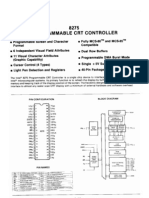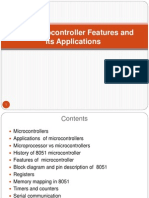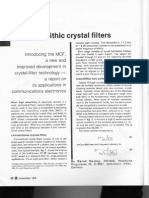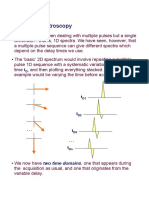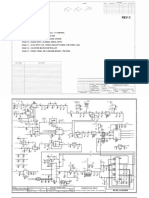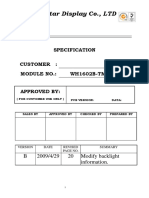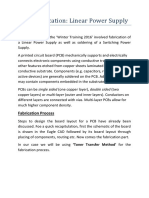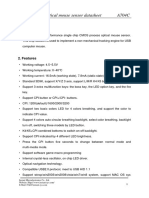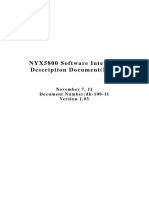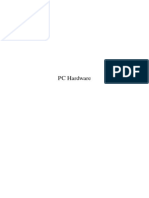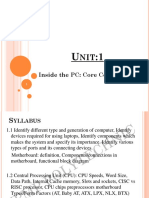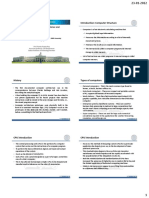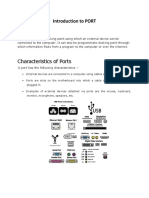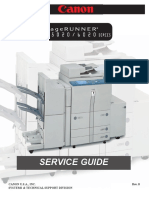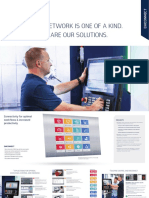IT151-Introduction to Information and
Communication Technology
The Basic Architecture of Computer System
Objectives
Internal Components of Computer System
How Computer Works
Processing Inside CPU
Components of Motherboard
Computer Architecture
Computer architecture is a science or a set of rules stating how
computer software and hardware are joined together and interact to
make a computer work.
It not only determines how the computer works but also of which
technologies the computer is capable.
Computers continue to be a major part of our lives, and computer
architects continue to develop new and better programs and
technologies.
Computer Architecture
Computer System
Output Device
System Unit
Output Device
Input Device
Output Device
Input Device
Internal Components of Computer System
How Computer Works
The entire computer functions can be grouped into four (4)
basic operations which include:
input operations
storage operations
data processing
output operations
How Computer Works: Step by Step
The user starts the computer
Computer performs power supply check (POST)
The CPU activate Basic Input/output System (BIOS) to initiate the booting process.
The BIOS loads the operating system
The operating system takes the control of the computer
The user initiates the program execution
The operating system loads program into the main memory
The CPU initiates the program execution
The User Input Data is stored the main memory
The processed data is sent to the output device.
Processing Inside CPU
The computer's central processing unit (CPU) is the portion of a computer that retrieves and executes
instructions. The CPU is essentially the brain of a computer aided design (CAD) system. It consists of an
arithmetic and logic unit (ALU), a control unit, and various registers.
The CPU is often simply referred to as the processor. The ALU performs arithmetic operations, logic
operations, and related operations, according to the program instructions.
Input devices transfer information from the designer/user into the computer's central processing unit (CPU)
so that the data, encoded in binary sequencing, may be manipulated and analyzed efficiently.
Output devices do exactly the opposite. They transfer binary data from the CPU back to the user in a usable
(usually visual) format.
The CPU operations are triggered on the rising and falling edges of the clock signal, allowing their exact
timing to be defined.
This allows events in the CPU to be completed in the correct sequence, with sufficient time allowed for each
step.
The CPU generates all the main control signals based on the clock. A given CPU can be used in different
system designs, depending on the type of application, the amount of memory needed, the I/O requirements
and so on.
Component Interaction
The CPU controls all of the other resources within the system, in order to
accomplish a task.
Processing Inside CPU-The machine cycle
In order to execute the program, the CPU repetitively performs a sequence of
four(4) steps called machine cycle. The machine cycle steps include;
Fetch
Decode
Execute
Store
The processed data after the CPU operation is sent back and stored into the
main memory. This processed data can be sent to any output device such as
display monitor or printer or secondary storage device for future use.
Processing Inside CPU-The machine cycle
Processing Inside CPU-The machine cycle
The control unit fetches (gets) the instruction from memory.
The control unit decodes the instruction (decides what it means) and directs that the
necessary data be moved from memory to the arithmetic/logic unit. These first two steps
together are called instruction time, or I-time.
The arithmetic/logic unit executes the arithmetic or logical instruction. That is, the ALU is
given control and performs the actual operation on the data.
The arithmetic/logic unit stores the result of this operation in memory or in a register. Steps
3 and 4 together are called execution time, or E-time.
The control unit eventually directs memory to release the result to an output device or a
secondary storage device.
The combination of I-time and E-time is called the machine cycle.
The Microcomputer System-Key Concepts
A microcomputer is a complete computer on a small scale, designed for use by one person at a time. Also
known as personal computer (PC), or a device based on a single-chip microprocessor.
Common microcomputers include laptops and desktops.
Beyond standard PCs, microcomputers also include some calculators, mobile phones, notebooks,
workstations and embedded systems.
Microcomputer applications
Education and entertainment.
Data and word processing, electronic spreadsheets, professional presentation and graphics programs,
communications and database management systems.
In business for tasks such as bookkeeping, inventory and communication
In medical for medical settings, record and recall patient data and manage healthcare plans
Microcomputers vs. Microprocessors
A microprocessor is a computer processor on a microchip that
contains all or most CPU functions.
Microprocessors do not have RAM, ROM or other peripherals. As
such, microprocessors cannot perform standalone tasks.
Standalone tasks can be performed by , systems such as
microcomputers, which contain microprocessors.
A microcomputer can technically be described as the combination
of a microprocessor and its peripheral I/O devices, circuitry and
memory - just not on a single chip.
Classification of Microprocessor
Classification of Microprocessor
A microprocessor can be classified into three categories :
RISC Processor: Stands for Reduced Instruction Set Computer. It is designed to reduce
the execution time by simplifying the instruction set of the computer.
Characteristics:
It consists of simple instructions.
It supports various data-type formats.
One cycle execution time.
It consists of larger number of registers.
Classification of Microprocessor:cont….
CISC Processor: CISC stands for Complex Instruction Set Computer.
It is designed to minimize the number of instructions per program, ignoring
the number of cycles per instruction.
Characteristics:
Larger number of instructions.
Variable length of instruction formats.
Several cycles may be required to execute one instruction.
Classification of Microprocessor:cont….
Special Processor: These are the processors which are designed for some special purposes.
Coprocessor: A coprocessor is a specially designed microprocessor, which can handle
its particular function many times faster than the ordinary microprocessor.
Input/output Processor: It is a specially designed microprocessor having a local
memory of its own, which is used to control I/O devices with minimum CPU
involvement.
Characteristics:
Very efficient for high computation per memory access
Not as efficient for random access, memory –intensive operations.
Motherboard
A motherboard is the central printed circuit board (PCB) in many modern
computers and holds many of the crucial components of the system, while
providing connectors for other peripherals.
It is a computer’s central communications backbone connectivity point,
through which all components and external peripherals connect.
The motherboard can be easily compared to the human body’s nervous
system. The wires (nerves) on it transfer data between all of the other
components.
It holds the CPU and memory as well as the connectors for the power supply,
hard drives, and other peripheral devices.
It is typically the second component chosen when building a computer after
the CPU.
Motherboard-Components
Motherboard-Components….cont
1. Mouse & keyboard
All PCs have a Key board and mouse port connected directly to the motherboard.
2. USB
USB is the General-purpose connection for PC. You can find USB versions of many
different devices, such as mice, keyboards, scanners, cameras, and even printers.
3. Parallel port
Most printers use a special connector called a parallel port.
4. CPU Chip
The central processing unit, also called the microprocessor performs all the
calculations that take place inside a pc. CPUs come in Variety of shapes and sizes.
5. RAM slots
Random-Access Memory (RAM) stores programs and data currently being used by the
Motherboard-Components….cont
6. Floppy controller
A floppy controller is one that is used to control the floppy drive.
7. Integrated Drive Electronics (IDE) controller
IDE controller is responsible for controlling the hard drive.
8. PCI slot
The Peripheral Component Interconnect (PCI) bus is used to connect I/O
devices (such as NIC or RAID controllers) to the main logic of the
computer.
9. ISA slot
Industry Standard Architecture) It is the standard architecture of the
Expansion bus.
Motherboard-Components….cont
10. CMOS Battery
A CMOS battery is like a watch battery that keeps power going to the motherboard
enough to retain its settings.
11. AGP slot
Is a high –speed point –to-point channel for attached to computer motherboard,
primarily to assist in the acceleration of 3D computer graphics.
12. CPU slot
To install the CPU, just slide it straight down into the slot.
13. Power supply plug in
The Power supply, as its name implies, provides the necessary electrical power to make
the pc operate.
How the Motherboard Works
The form factor is basically how a motherboard is formed, or how it physically looks
regarding its specifications (namely size, shape, and layout).
Chipset: The chipset allows data to flow between various components, namely the CPU,
peripherals, ATA drives, graphics, and memory. Divided into categories:
Northbridge: Located on the “north” side of a chipset, it “bridges” together the
following components: CPU, RAM, and PCIe
Southbridge: Located on the “south” side of a chipset, it “bridges” together the
following components: BIOS, USB, SATA, and PCI
CPU Socket
This is basically a little habitat for the CPU to rest in. A CPU is a small square with a
bunch of pins and connectors underneath it that help to interpret and transmit data
carried out by the northbridge part of a chipset.
How the Motherboard Works
Slots
Slots are like these kinds of departments for a motherboard, with branches like:
Memory/DIMM Slots: Used for holding memory/RAM
PCI: Connects expansion cards like video, network, and sound cards
PCIe: A modern version of PCI but with a different interface that can
work with almost any kind of expansion card
USB: Used for USB connectors like flash drives, although not very
common
Data Bus
All of the components mentioned above would not work in unison without
the necessary data buses that connect everything together.
How the Motherboard Works:Step by step
When you turn your computer on, power is sent from the power
supply on to the motherboard.
Data is transferred via data buses and goes through the northbridge
and southbridge part of the chipset.
The northbridge part bridges data to the CPU, RAM, and PCIe. The
RAM begins to send inputs to the CPU, which “interprets” these
actions as an output.
Data to the PCIe is then transferred to an expansion card, depending
on which type.
How the Motherboard Works:Step by step
The southbridge part bridges data to the Basic Input/Output
System(BIOS), Universal serial bus(USB), Serial advanced
technology attachment(SATA), and Peripheral Component
Interconnect(PCI).
Signals to the BIOS allow your computer to boot up, while
data to the SATA “awakens” your optical, hard disk, and solid-
state drives.
Data from the SATA is used to power up your video, network,
and sound cards.
How the Motherboard Works: Step by step
In short, a motherboard serves as the headquarters of a
computer which transmits data via data buses.
These data buses go through the northbridge and
southbridge parts of a chipset, which then venture off into
other components like the CPU, RAM, PCI, PCIe, etc.
Everything works together like a successful corporation.
Review Questions
Explain how the computer works
Mention the classes of microprocessor and their
functions
Briefly explain how the motherboard works


